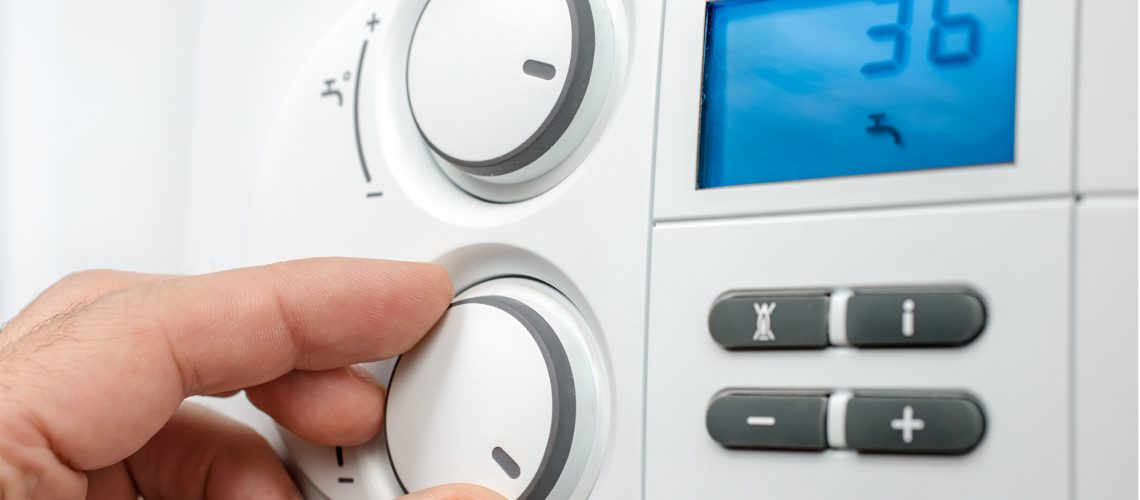We always want you to get the best from your heating and hot water. So, as a result, we have produced this mini guide to your combi boiler. We plan to write more in-depth articles on all aspects of combi boilers soon.
The purpose of this guide is to get a better understand of how your boiler works. We will explain how it delivers heating and hot water, and how to operate it in high demand or extreme weather. Hopefully, you will find this information helpful.
Quick combi boiler information
A combination boiler (widely known as a combi), combines both heating and hot water functions in one appliance. Today, combi boilers are compact, easy to use, reliable, efficient, and very effective at delivering heating and hot water straight from one unit.
Combi boilers can be wall or floor mounted. Every boiler must have a flue fitted. A flue (fitted to the boiler) discharges the products of combustion safely to outside. It is best practice that the flue takes the shortest possible route to outside.
You will find seven pipes attached to the boiler:
- A gas supply pipe
- Mains cold water inlet
- Hot water outlet
- Central heating flow pipe
- Central heating return pipe
- Pressure relief pipe
- Condensate pipe
How does it work? A guide to your combi boiler.
A combination boiler combines central heating and hot water in one appliance. It is worth pointing out early on that a combi boiler can only perform one of these functions at a time, and it always prioritises hot water.
The process to generate the heat required for both heating and hot water is the same. The copper gas pipe supplies gas from the meter, via a gas valve, to a gas burner inside a sealed chamber. When the burner is lit, it directs heat towards the main heat exchanger. Modern combis extract as much heat from the gas as possible, which forms condensation inside the heat exchanger. The condensate pipe collects the condensation and discharges it outside.
In cold weather, the condensate pipe needs protection from freezing. It is good practice to run as much of the pipe internally before exposing it to outside. Any external condensate pipe must minimise horizontal runs. Protect smaller external condensate pipe using lagging and a frost protection device (short runs of 42mm or greater pipework do not require lagging).
Is the pressure system safe?
Inside the heat exchanger, heat energy transfers to system water (the water that goes around the radiators). The boiler manufacturer recommends using a sealed system, and the water set to operating pressure. If there is a problem with the boiler, pump or filling system, the boiler will safely discharge excess pressure via the pressure relief pipe. The discharge pressure limit is 3 bar, set by a pressure relief valve (PRV). The PRV connects the system water to the pressure relief pipe.
The PRV pipe must be installed in copper. Always terminate the PRV as per the manufacturer’s instructions or current safety regulations. A dripping PRV pipe usually indicates a problem with the pressure system in the boiler. A qualified engineer would need to be called to make adjustments or repairs.
Central Heating
We continue this guide to your combi with the central heating function. In most cases, combi boilers heat a house by pumping hot water through pipes to radiators in each room. This is controlled via a programmer or timer, and a room thermostat. Each radiator has an inlet and outlet valve fitted. The radiator valves are used to balance the heat distribution. To ensure the heat reaches all radiators evenly, the valves will need balancing. Thermostatic radiator valves can be fitted to increase efficiency and comfort control.
It is important to balance your radiators. Ensure that your heating engineer carries out this task when installing a new boiler, or fixing something on the boiler or system. Today there are systems that provide remote heating controls via your mobile phone or tablet. This adds extra control and can be really user-friendly, especially when travelling or returning home unexpectedly.
Hot Water
Hot water generates when mains cold water heats up as it flows through the combi. The water diverts away from the radiator circuit using a diverter valve and into a plate heat exchanger (PHE). The PHE transfers system water heat to mains cold water as soon as a tap or shower is running. The hot water reaches a set temperature indicated by the boiler control. The gas burner modulates to keep the temperature even. Finally, thermistors regulate the gas as the mains water is running, to keep the water temperature consistent.
In extreme cold, some combi boilers may struggle to reach the required temperature. Reducing the flow rate from the tap or shower can help with this scenario. The vast majority of new combis can cope with these infrequent demands.
This guide to your combi boiler is an overview of the funtionality of this type of appliance. We will be writing more in-depth blogs on many of the topics covered here, and will link them to this article once they are published.

